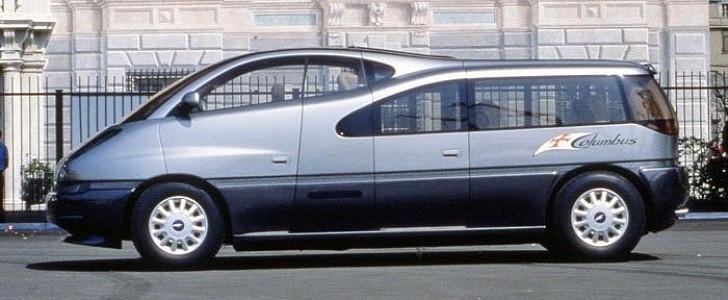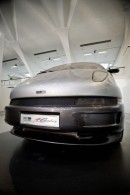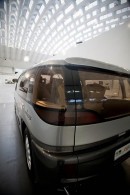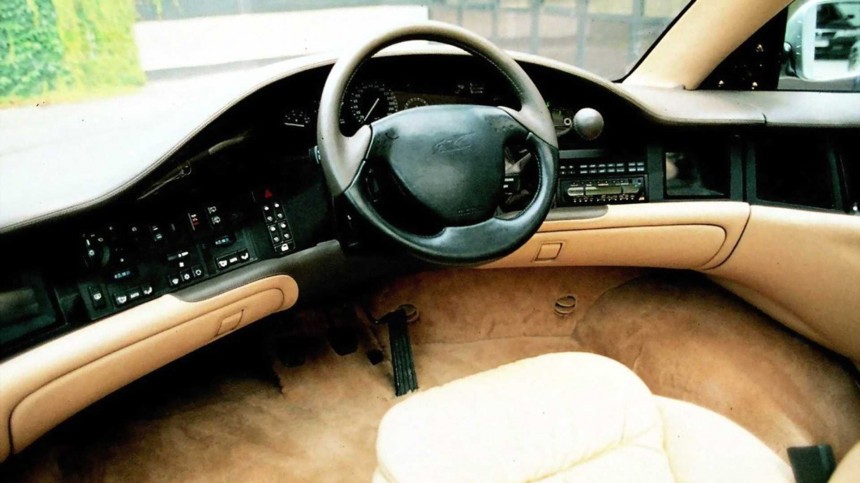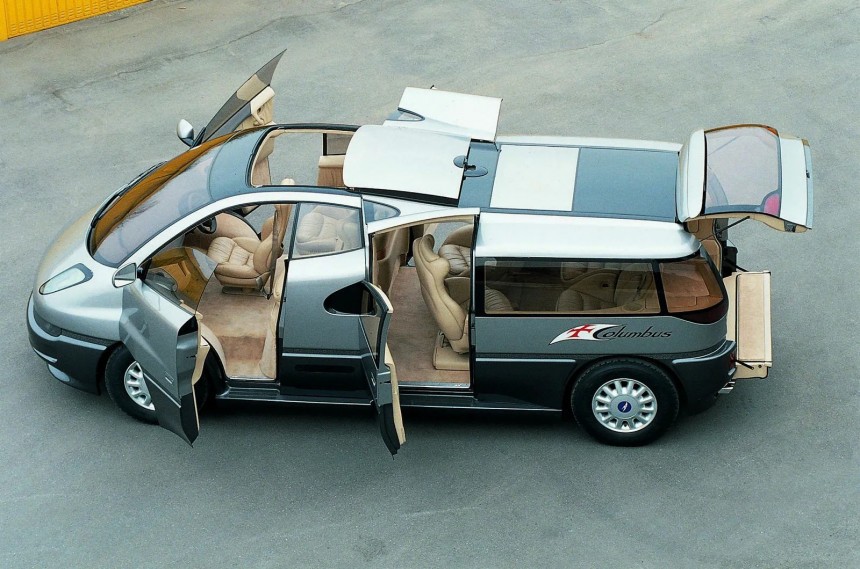In 1492, one Italian adventurer set sail from Spain and ended up in the Bahamas after a five-week voyage. That trip across the Atlantic became one of the most significant events in human history. It triggered a mass migration of Europeans to the newly discovered territories of what is now known as the Americas. That sailor’s name was Christopher Columbus, and the colonial age was about to begin.
Fast-forward half a millennium after the famous sailing, another Italian – a designer – took it upon himself to celebrate the great exploration that put America on the world’s map. What better way to praise the conqueror of 1492 than by building a unique automobile? The year was 1992, and the car emerged as the Columbus, a Giugiaro prototype of an “ultra-high-level status” vehicle.
In automotive terms, this exclusive segment is usually represented by extreme machines – either they’re hyper-fast or technological wonders, capable of unseen feats of mechanical performances, or clad in opulence.
However, Giugiaro took a new path and drew a new line in the sand. Conceived as a “sailing ship for dry land,” the Columbus was a mid-engined, four-wheel-drive-four-wheel-steering, center-drive nine-seater van. A one-of-a-kind, oddly shaped, high-tech family mover with a BMW V12 engine sitting under the driver, the Columbus was a head-turner.
Its shape alone is enough to raise eyebrows and questions, even before one can get a closer look at the vehicle. Its two sections – front and rear – are set in different planes, with the heightened bubbly front protruding upward to give the driver a better sight of the road.
The driver’s swiveling seat takes up the entire front of the cabin at an equal distance from both front doors. The oversized dashboard extends symmetrically on the right and left of the steering wheel above the dual glove compartments.
Also located in the head section, behind the driver, there are two passenger seats – the first of three pairs of revolving bucket seats. I said the van was a nine-seater and the count only adds up to seven, but the interior could be easily modified to accommodate two more passengers.
Or, if the ultra-high level of status included blue-collared eccentricities, the van could morph into a cargo carrier by removing the leather-covered seats and all passenger-related tech amenities. In 1992, that meant the TV monitors – one for each occupant, except the driver. Three decades ago, Columbus offered its travelers access to network television. If the programming was not entertaining enough, a drive-along movie would compensate by using the VHS System.
The car had four doors and a rear hatch, plus a retractable sunroof – for fresh air because the vehicle was abundantly rich in windows. The second row of doors consisted of a hybrid gullwing-classic opening system. The lower half of the door would open like regular car doors, while the upper section hung from the roof.
The fiber optic compartment lighting was another notable feature of the weirdly-profiled Columbus (while documenting this article, I found one particular comment about the car’s profile: “it looks like a rear-ending car crash gone right.” It describes it just right). The engine mounting was another.
Unlike most of its people-carrying counterparts, the Columbus designers opted for the engine-in-the-middle solution. You can see precisely in between the two axles in the gallery, but there was no shortage of space with a 150-inch (3.8 meters) wheelbase; the car had plenty of room. Almost seven feet tall and just as wide, the van spanned 20 feet in length.
Giugiaro opted for a no-nonsense BMW V12 power plant for his celebratory prototype: the 5.0-liter transverse mill gave out 295 hp (300 ps) and 332 lb-ft (450 Nm) of torque. The permanent four-wheel drive was supplemented by all-wheel-steering – the rear wheels had a turning angle of 15 degrees at low speeds.
In theory, the car could hit 130 mph (210 kph), but that wasn’t the purpose for which it came into this world. Its 20-inch wheels weren’t looking for tire-shredding magnificence but rather cruising along softly and peacefully. Its carbon fiber body was more at home in the environments of densely-populated American metropoles, gliding across the tamed landscape crafted by 500 years of the European conquest of the continent.
In automotive terms, this exclusive segment is usually represented by extreme machines – either they’re hyper-fast or technological wonders, capable of unseen feats of mechanical performances, or clad in opulence.
However, Giugiaro took a new path and drew a new line in the sand. Conceived as a “sailing ship for dry land,” the Columbus was a mid-engined, four-wheel-drive-four-wheel-steering, center-drive nine-seater van. A one-of-a-kind, oddly shaped, high-tech family mover with a BMW V12 engine sitting under the driver, the Columbus was a head-turner.
Its shape alone is enough to raise eyebrows and questions, even before one can get a closer look at the vehicle. Its two sections – front and rear – are set in different planes, with the heightened bubbly front protruding upward to give the driver a better sight of the road.
Also located in the head section, behind the driver, there are two passenger seats – the first of three pairs of revolving bucket seats. I said the van was a nine-seater and the count only adds up to seven, but the interior could be easily modified to accommodate two more passengers.
Or, if the ultra-high level of status included blue-collared eccentricities, the van could morph into a cargo carrier by removing the leather-covered seats and all passenger-related tech amenities. In 1992, that meant the TV monitors – one for each occupant, except the driver. Three decades ago, Columbus offered its travelers access to network television. If the programming was not entertaining enough, a drive-along movie would compensate by using the VHS System.
The car had four doors and a rear hatch, plus a retractable sunroof – for fresh air because the vehicle was abundantly rich in windows. The second row of doors consisted of a hybrid gullwing-classic opening system. The lower half of the door would open like regular car doors, while the upper section hung from the roof.
Unlike most of its people-carrying counterparts, the Columbus designers opted for the engine-in-the-middle solution. You can see precisely in between the two axles in the gallery, but there was no shortage of space with a 150-inch (3.8 meters) wheelbase; the car had plenty of room. Almost seven feet tall and just as wide, the van spanned 20 feet in length.
Giugiaro opted for a no-nonsense BMW V12 power plant for his celebratory prototype: the 5.0-liter transverse mill gave out 295 hp (300 ps) and 332 lb-ft (450 Nm) of torque. The permanent four-wheel drive was supplemented by all-wheel-steering – the rear wheels had a turning angle of 15 degrees at low speeds.
In theory, the car could hit 130 mph (210 kph), but that wasn’t the purpose for which it came into this world. Its 20-inch wheels weren’t looking for tire-shredding magnificence but rather cruising along softly and peacefully. Its carbon fiber body was more at home in the environments of densely-populated American metropoles, gliding across the tamed landscape crafted by 500 years of the European conquest of the continent.
